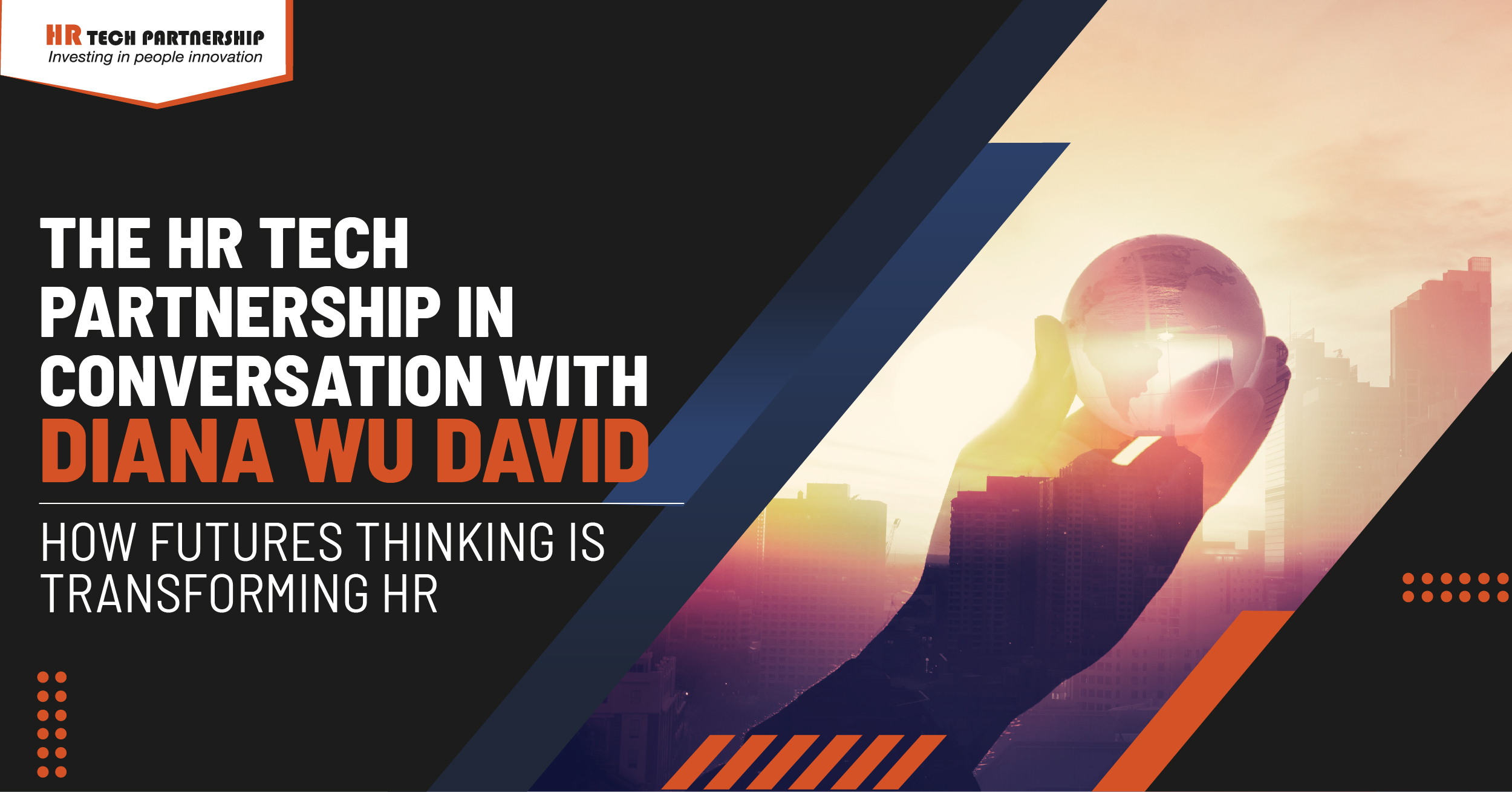Our Content Editor, Gabriel Barnes, speaks to Diana Wu David, author of ‘Future proof: Reinventing Work in an Age of Acceleration’. They discuss the concept of ‘future thinking’- how it is driving innovation from start-ups to large organisations, and how it can be used by HR to ensure agility and drive transformation.
Gabriel Barnes: What do you mean by ‘Futures Thinking’?
Diana Wu David –Futures Thinking is a method of informed reflection on the major changes that will occur in the next 10, 20 or more years. It’s about scanning the horizon across social systems, work, demographics, education, and consumer behaviour, and using a multidisciplinary approach to go beyond incremental gains and identify the signals of dynamics that are creating the future.
Signals for the future of work have been apparent for years in movies and popular literature. In 1952, Kurt Vonnegut wrote a novel, Player Piano, about engineers who take over most work leaving non-engineers with no status or meaningful employment. More recently, series like Humans and Black Mirror, and movies such as Wall-E and Ex-Machina, have explored a future where technology in particular has transformed life and work.
There are numerous examples of this in the real world too. Amazon Go created human-less checkouts which have now spread throughout McDonald’s, Tesco, and many other supermarkets around the globe, including the local one in my neighbourhood. Huge companies like AT&T have had to upskill their employees to keep up with these changes. Start-ups like Empath have begun to categorise the skills of employees based on masses of data including in order to find hidden talent that could be applied to future work requirements.
Gabriel Barnes: ‘The future of work is now’ – this is something you hear people saying a lot. What is the benefit of thinking so far out into the future when we have so much on our plate today?
Diana Wu David – Future Thinking is about seeing what’s coming faster, so you can be better prepared for disruptions and understand what changes are worth making today. Understanding what work will look like 20 years from now may seem far-fetched. However, many companies are being caught out because while the workplace is changing exponentially, they only seem to be making small, incremental changes. Foresight can allow organisations to pilot initiatives to see what works best for them, before it becomes urgent.
For example, companies that had foreseen the trend towards distributed work, or had dealt with shocks to their workforce previously, were better prepared for a quick transition to remote working during lockdowns.
In my previous position at the Financial Times, the digital transformation had led to an overhaul of the process of news reporting – ultimately prompting the organization to rethink how workspaces should look. It is now introducing more common areas and ‘hot desking’ in its offices. With its roots as a daily perishable newspaper product, the Financial Times had solid business continuity plans which were tested heavily during the Japanese Tsunami of 2011.
The combination of futures thinking and learning from past stresses made a shift to remote work easier than it was for other companies which were caught out by the idea that they could no longer do their work onsite.
HR leaders will have to get comfortable with a more innovative mindset, and when they have an idea or an assumption about the future of work, must ask themselves what project they need to undertake to test it.
Gabriel Barnes: In what ways have you seen the coronavirus crisis changing the way leaders are thinking about the future of work?
Diana Wu David – When my book, Future Proof: Reinventing Work in an Age of Acceleration, came out in 1999, I spent a lot of time trying to convince people that virtual collaboration and working across peer networks was an essential skill for the 21st Century. This seemed like a fringe thing that was a fantasy to many in the C-suite. During the coronavirus crisis, CEOs have been holding meetings from their living rooms. Gig economy work has soared. ‘To Zoom’ has become a verb and most people are now working out of the office at least part time. Even the approach towards mental health has been transformed – from being a consideration primarily of those who are unwell, to a necessary component of a healthy workplace.
Gabriel Barnes: You write about and consult on the future or work extensively. What are your predictions for work in, for example, 2040?
Diana Wu David – I believe that by 2040, work will have broken with the 40-hour week standard. There will be no more traditional ‘jobs’, only work that people are contracted to do. People within corporations will be managing the core brands and using on-demand talent projects to spearhead new initiatives and projects, with the prominent use of machine learning and AI for routine or computing-heavy processes.
Micro-credentials will become commonplace for most projects, and AI will crunch through the data on your personal data repository to suggest new projects in your area that leverage your skills and interests. Likewise, companies will be able to inventory their skills in-house to determine gaps they can fill through upskilling, reskilling or outside input for short or longer term. There will be multiple stages in people’s work life, supported by new financial products that the government and corporates can contribute into, even for gig workers, to ensure a positive contribution from everybody over a 100-year life.

